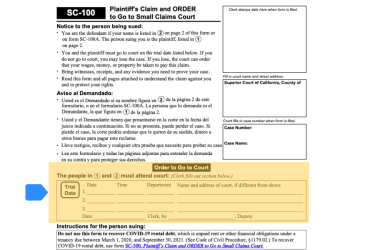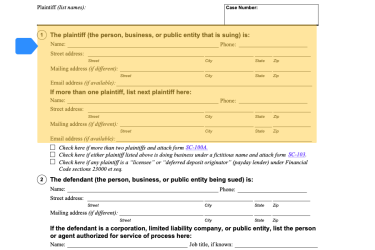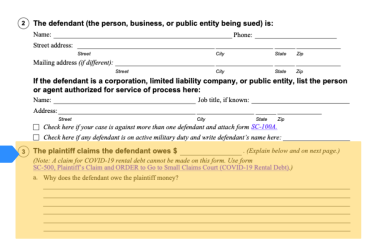What do these papers mean?
Plaintiff’s Claim and ORDER to Go to Small Claims Court (form SC-100)
If you received a Plaintiff’s Claim and ORDER to Go to Small Claims Court (form SC-100), it means someone is suing you in small claims court. The court sets a date to hear from both sides (a trial) before it makes a decision.

Trial date and time
The date, time, and location are on the first page.

Who is suing you
The name of the person, business, or government agency that’s suing you on page 2.

What the other side is asking the judge to decide
How much money the other side is asking for, and why, are written on page 2 and on any attachments.
What you can do
Come to an agreement with the other side
If you can work with the other side (and there is no restraining order involved) you may be able to come to an agreement on your own without going to court.
Go to your court date
If you disagree with all or some of what the other side is asking for or saying, you can go to the court date and give your side of the story.
Sue the other side back and go to the court date
If you think they owe you money, you can fill out, file, and serve a Defendant’s Claim and ORDER to Go to Small Claims Court (form SC-120). Then you can go to the court date and give your side of the story. If you can’t afford the filing fee, you can ask for a fee waiver.
Choose to not respond
If you were given the forms correctly (served) and don’t go to the court date, the judge will decide without your input. You will probably lose the case and owe the other side money.
Explore your options
What's next?
Once you decide if and how you’re going to react to the other side’s papers, go to the step-by-step instructions.
If you’re going to file a Defendant’s Claim, there's a deadline you'll need to meet.

